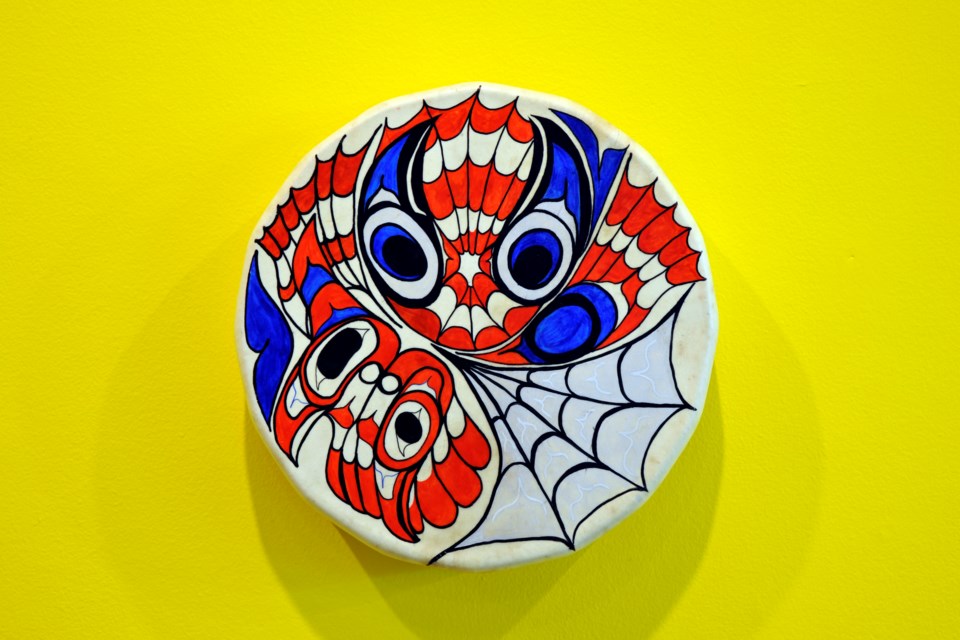You’ll find plenty of superheroes at the Art Gallery of Sudbury this month, but you won’t find them fighting the usual villains.
When Raven Became Spider is an exhibit showcasing comic book imagery combined with stories and themes from traditional and contemporary Indigenous culture, on until Oct. 29. And the colourful, pop-art style pieces present a unique take on everyone’s favourite superheroes.
The Vancouver-based curator, Leena Minifie, said that the first thing most people wonder when they first come see it is, “Where are all the villains?”
Her reply?
“I wanted to have a positive show that showed our resilience and the power of the women and our men and people and our communities,” said Minifie, who grew up as a member of the Gitxaala First Nation of Tsimshian in northern B.C.
“We are already villainized on a continuous basis in this country, and our stories never had villains they just had characters who were themselves.”
Minifie said the content of the exhibit reflects the ambiguity of many Indigenous storytelling traditions, like the ones she grew up with.
“The Western society always has these ideas of good and bad, evil and saintly, dark and light … but in our supernatural stories, people are quite complicated, they’re quite complex, they don’t fit into that kind of narrative.”
Work that combines Indigenous traditions with comic book tropes attracted Minifie because the two were both such a large part of her childhood.
“I always read comics as a kid. I didn’t have TV when I was young,” said Minifie. “I used to stay up all night with my flashlight reading!”
Minifie said she thought up the exhibit when she was living in Regina, as an exhibit for their public library where there would be plenty of exposure to visiting families.
But if you think comics are for just for kids, think again.
“Each of our traditional stories is a learning opportunity and every time you hear it you learn something else depending on what life cycle you’re in,” said Minifie.
The exhibit includes work by six Indigenous artists: Joi T. Arcand, Julianne Herney, Shaun Beyale, Elle-Máijá Tailfeathers, Jeffrey Veregge, and Sonny Assu.
In fact, the exhibit takes its name from Assu’s work about Raven revealing himself to be Spiderman.
The exhibit wound up in Sudbury thanks to Deanna Nebenionquit, who is the Art Gallery of Sudbury’s collections manager and curator alternate.
“I wanted to feature the exhibition … because the show successfully packs several punches into one gallery: six amazing artists, a blend of traditional and contemporary art, an intriguing installation, and space to interpret Indigenous narratives from a creative perspective,” said Nebenionquit.
“My hope is that visitors will walk away intrigued and will continue exploring the richness in the Indigenous art scene.”
Minifie’s hope is that When Raven Became Spider will one day make it all the way to New Mexico, where there’s an Indigenous Comic Con.
So far the exhibit has been to Regina, Ottawa, and after Sudbury, it’s heading to Toronto.
Ella Jane Myers is a freelance writer in Greater Sudbury.
